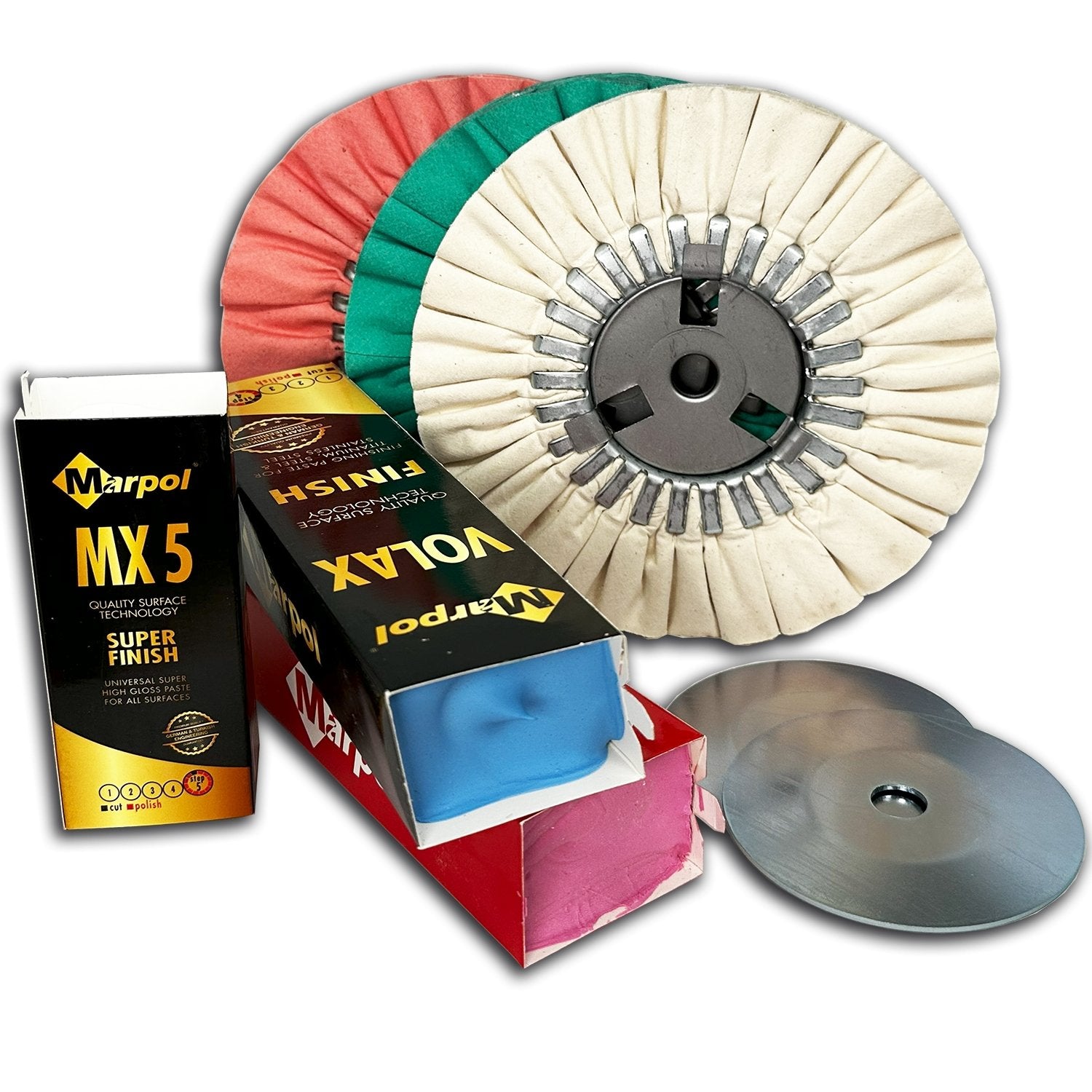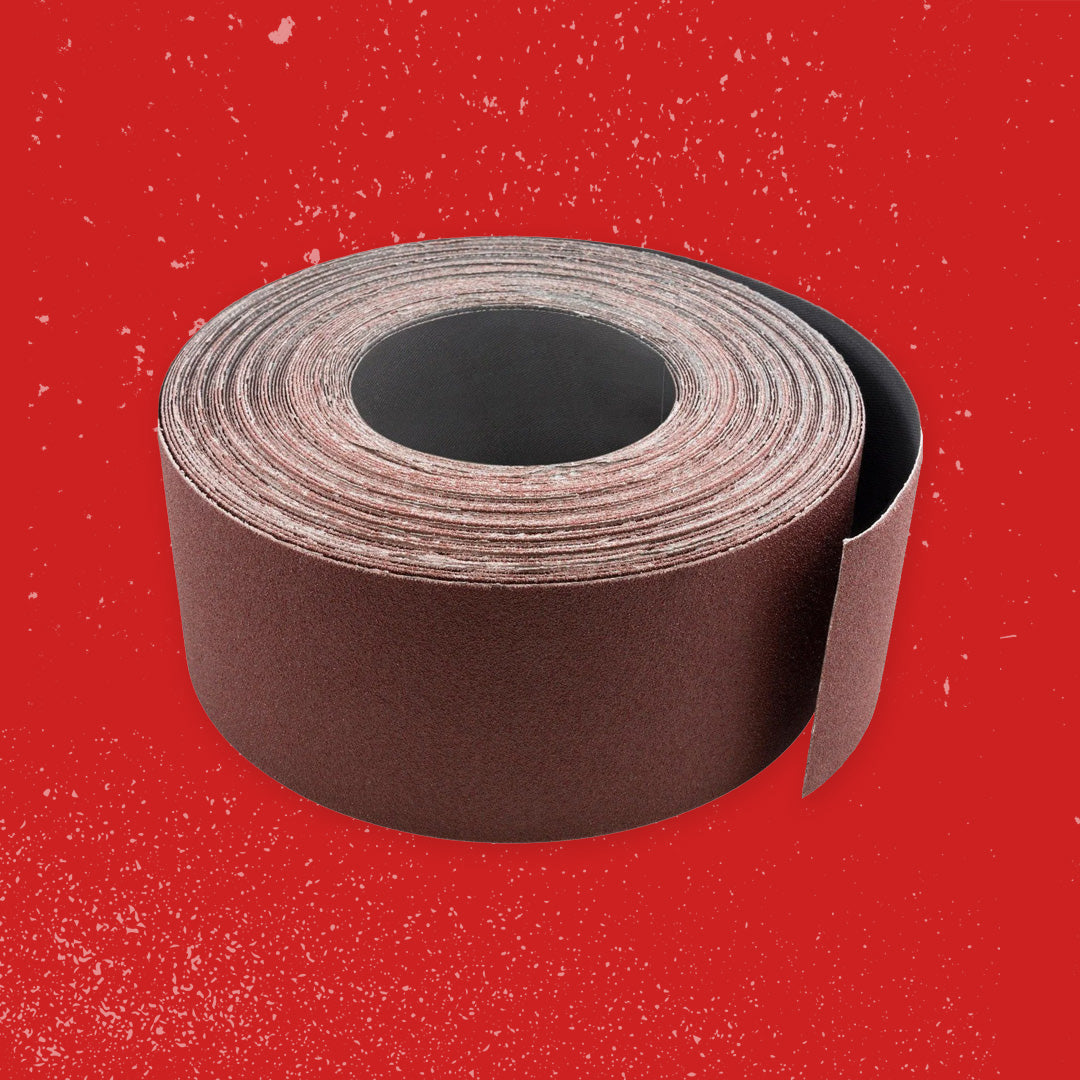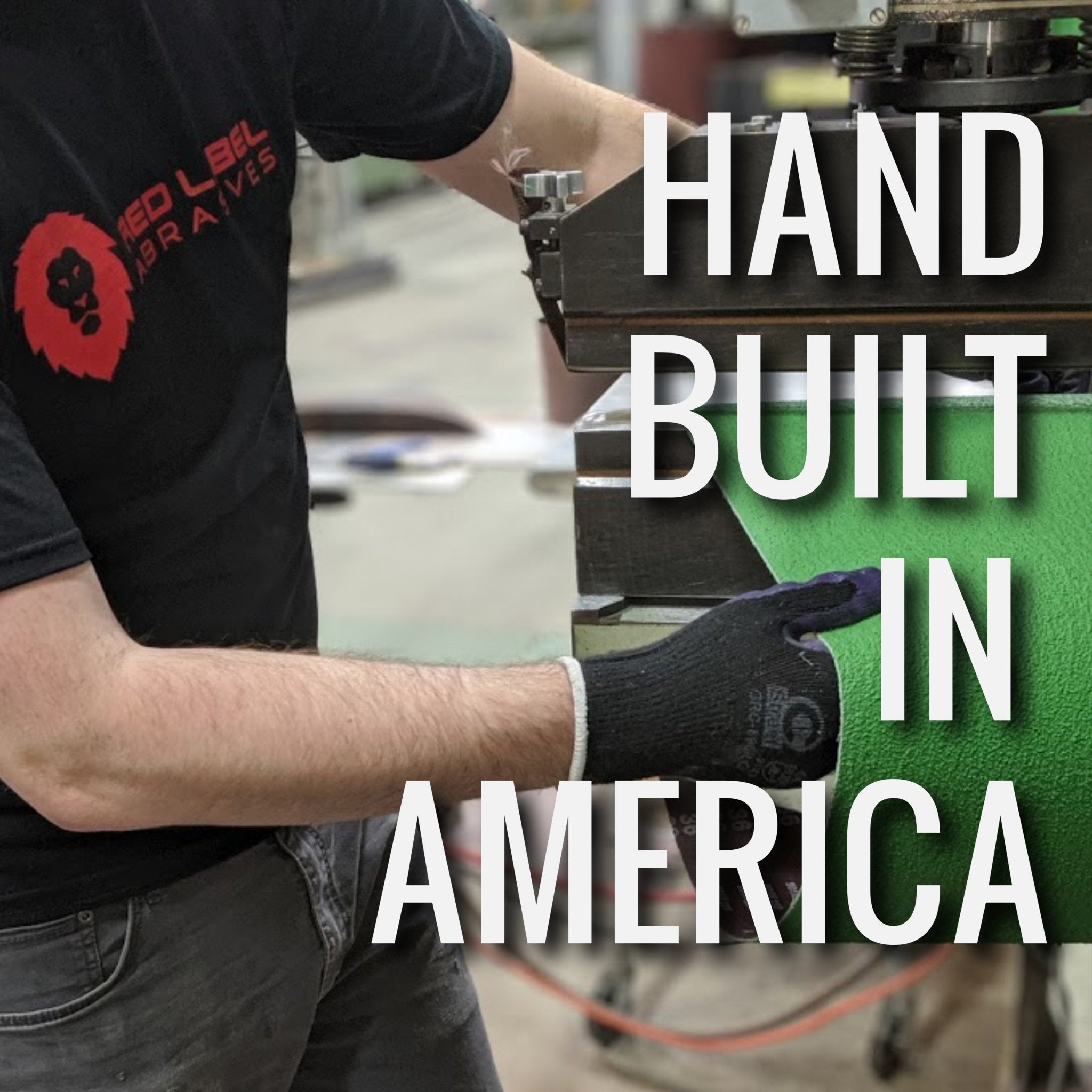Tu carrito está vacío
Envío gratis a partir de $150 (No incluye productos de gran tamaño)
Envío gratis a partir de $150 (No incluye productos de gran tamaño)
Bandas de lijado
Discos de lijado

Why Your Sanding Discs Aren’t Sticking: Issues & Solutions
por David Kranker 8 lectura mínima

Quick Summary
Sanding discs not sticking can be caused by surface contamination, worn-out backing pads, or using the wrong type of disc for your sander. Environmental factors like temperature and humidity, improper application techniques, and degraded adhesives can also affect adhesion. Regularly cleaning the backing pad, ensuring proper disc alignment, and storing discs correctly can improve performance. High-quality sanding discs, like those from Red Label Abrasives, offer better adhesion and durability. Maintaining your tools and using the right discs for your tasks will lead to more efficient sanding.
Common Reasons Your Sanding Discs Aren’t Sticking
There are several reasons why sanding discs fall off. In some cases, the condition of the backing pad or surface of the workpiece is an issue, while other times you’re using the wrong type of disc or storing your sanding supplies in a humid environment. Below is an overview of possible causes to investigate.
1. Surface Contamination
One of the most common reasons sanding discs don’t stick is surface contamination. Dust, dirt, oil, and other residues can create a barrier between the adhesive on the back of the disc and the backing pad or sanding tool. Even the smallest amount of contamination can prevent the disc from sticking properly, leading to frustration and wasted materials.
Solution: Before applying a new sanding disc, take a moment to clean the backing pad thoroughly. Use a clean, dry cloth or a mild solvent like rubbing alcohol to remove any dirt, dust, or oils. Make sure the pad is completely dry before applying the disc. Regular cleaning of your tools and workspace can also help prevent this issue from occurring in the first place.
2. Worn-Out Backing Pads
Over time, the backing pad on your sander can wear out. The surface that the sanding disc adheres to becomes smooth, shiny, or even cracked, making it difficult for the adhesive to grip properly. A worn-out pad not only affects adhesion but can also lead to uneven sanding and damage to your workpiece.
Solution: Inspect your backing pad regularly for signs of wear. If you notice that the surface is smooth or cracked, it’s time to replace it.
3. Using the Wrong Type of Sanding Disc
Not all sanding discs are created equal, and using the wrong type for your specific sander can cause adhesion issues. For example, some discs are designed with pressure-sensitive adhesive (PSA), while others use hook-and-loop (Velcro) systems. If you try to use a PSA disc on a hook-and-loop pad, it simply won’t stick.
Solution: Make sure you’re using the right type of sanding disc for your orbital sander. Check the manufacturer’s recommendations for your tool and match the disc type accordingly. If you’re unsure, consult with a knowledgeable supplier like Red Label Abrasives to ensure you’re getting the right product for your needs.
4. Temperature and Humidity Effects
Environmental factors like temperature and humidity can impact the adhesive properties of sanding discs. High humidity can cause the adhesive to become tacky and lose its grip, while low temperatures can make the adhesive too stiff to bond properly. If you’re working in an environment with extreme temperatures or moisture levels, you may find that your sanding discs aren’t sticking as they should.
Solution: Try to store your sanding discs in a cool, dry place to maintain their adhesive quality. If you’re working in a humid environment, consider using a dehumidifier in your workspace to control moisture levels. Similarly, if you’re working in cold conditions, try to warm up the discs slightly before use to improve adhesion.
5. Improper Application Technique
Sometimes the problem isn’t with the disc or the environment but with how the disc is applied. If you’re not applying enough pressure when attaching the disc, or if you’re not aligning it properly, it may not stick as well as it should. Applying the disc too quickly without taking the time to ensure proper contact can also lead to poor adhesion.
Solution: Take your time when applying sanding discs. Ensure the backing pad is clean and that you’re aligning the disc properly before pressing it down. Apply firm, even pressure across the entire surface to ensure a strong bond. Avoid rushing this step, as the proper application can save you time and frustration in the long run.
6. Expired or Low-Quality Adhesive
Adhesives, like any other material, have a shelf life. If your sanding discs have been sitting in your workshop for a long time, the adhesive might have degraded, leading to poor sticking ability. Similarly, using low-quality sanding discs with subpar adhesive can cause issues, even if everything else is done correctly.
Solution: Check the age and quality of your sanding discs. If they’re old or have been stored improperly, it might be time to replace them with new ones. Investing in high-quality discs with reliable adhesive can make a big difference in your sanding performance.
7. Incompatible Backing Pads and Discs
In some cases, the backing pad and the sanding discs may be incompatible, leading to adhesion problems. For example, using a hook-and-loop pad with a PSA disc or vice versa will prevent proper adhesion. Even if the disc seems to stick initially, it may come loose during use, leading to delays and potential damage to your workpiece.
Solution: Always confirm that your backing pad and sanding discs are compatible. If you’re using a hook-and-loop pad, make sure to use hook-and-loop discs. If you prefer PSA discs, use a smooth, flat backing pad designed for PSA products. Double-checking compatibility before starting your project can save you time and headaches later.
8. Improper Storage of Sanding Discs
How you store your sanding discs can have a big impact on their adhesive quality. If they’re exposed to moisture, extreme temperatures, or direct sunlight, the adhesive can degrade over time, making it difficult for the discs to stick properly. Improper storage can also lead to curling or warping of the discs, further complicating adhesion.
Solution: Store your sanding discs in a cool, dry place away from direct sunlight. Keep them in their original packaging or a sealed container to protect them from moisture and dust. By maintaining proper storage conditions, you’ll ensure that your discs are in top condition when you’re ready to use them.
9. Excessive Heat During Sanding
Sanding generates heat, especially when working with harder materials or using aggressive grits. If the sanding process generates too much heat, it can soften the adhesive on the back of the disc, causing it to lose its grip on the backing pad. This can lead to the disc slipping or flying off during use, creating safety hazards and damaging your work.
Solution: To reduce heat buildup, use a lighter touch and slower speeds when sanding. If possible, take breaks between sanding sessions to allow the disc and backing pad to cool down. You should also use a coarser grit for the initial sanding and switch to finer grits as you progress. This approach reduces the need for excessive pressure and minimizes heat generation.
10. Inadequate Contact Area
Sometimes the problem lies in the contact area between the disc and the backing pad. If the backing pad is smaller than the disc or has a shape that doesn’t fully align with the disc, you may experience poor adhesion. Inadequate contact can cause the disc to lift or peel away during use, leading to uneven sanding and potential damage.
Solution: Confirm that your backing pad and sanding discs are the correct size and shape for each other. The entire surface of the disc should make contact with the backing pad to create a strong bond. If necessary, switch to a different backing pad that better matches the size and shape of your discs.
11. Residue Buildup on Backing Pad
Over time, the backing pad can accumulate residue from adhesives, dust, and other materials. This buildup can create a barrier between the new sanding disc and the pad, preventing proper adhesion. Residue buildup not only affects the bond but can also cause uneven sanding and premature wear on your discs.
Solution: Clean your backing pad regularly to remove any residue buildup. Use a mild solvent like rubbing alcohol or a dedicated adhesive remover to clean the pad. Be sure to let the pad dry completely before attaching a new disc. Regular maintenance of your tools will help extend the life of both your sanding discs and your backing pad.
12. Incorrect Sanding Technique
Even if your sanding discs are sticking well initially, incorrect sanding techniques can cause them to lose adhesion during use. Applying too much pressure, using excessive speed, or sanding at the wrong angle can all contribute to disc slippage or peeling.
Solution: Practice proper sanding techniques to ensure consistent results. Use moderate pressure and allow the sander to do the work rather than forcing the disc into the material. Maintain a consistent angle and speed to avoid generating excessive heat or pressure that could compromise the adhesive bond. Proper technique not only improves adhesion but also leads to better overall sanding results.
Troubleshooting Tips for Persistent Adhesion Problems
If you’ve tried the solutions above and are still experiencing issues with sanding discs not sticking, there are a few additional steps you can take to diagnose and move past the problem:
- Test Different Discs: Sometimes switching to a different brand or type of sanding disc can resolve adhesion problems. Experiment with a few options to find the best fit for your sander and project.
- Check for Pad Wear: If your backing pad is older, it may be time to replace it. A new pad can make a significant difference in disc adhesion.
- Consider Environmental Factors: If you’re working in extreme temperatures or humidity levels, consider how these environmental factors might be affecting the adhesive on your sanding discs. You might need to adjust your workspace conditions or use sanding discs specifically designed to perform better in challenging environments.
- Inspect Your Tools: Regularly inspect your sander and backing pad for any signs of wear or damage. Even small imperfections on the backing pad can affect how well your sanding discs stick. If you notice any issues, replacing the backing pad or making necessary repairs can improve your sanding experience.
- Consult with Experts: If you’re still having trouble after trying these solutions, it might be time to reach out to a professional. Manufacturers like Red Label Abrasives have experts who can help you troubleshoot your specific situation and recommend the best products and practices for your needs.
Eliminate Adhesion Problems With Premium Sanding Discs
Dealing with sanding discs that don’t stick can be frustrating, but with the right knowledge and techniques, you can solve the problem and keep your projects on track. Whether it’s cleaning your backing pad, selecting the right disc, or adjusting your workspace environment, taking the time to address the causes of poor adhesion will save you time and effort in the long run.
If you’re looking for high-quality sanding discs that provide reliable adhesion and top-notch performance, we invite you to check out the selection at Red Label Abrasives. Our products are designed with the needs of woodworkers, metalworkers, and DIY enthusiasts in mind, ensuring that you get the best results every time. Whether you need help choosing the right disc or troubleshooting an issue, our team of experts is here to assist you. If you have any questions or would like to place an order, please contact us by calling 844-824-1956 or filling out our contact form today.
Ver artículo completo

Micarta vs. G10 for Knife Scales: Which is Better?
por David Kranker 9 lectura mínima
Ver artículo completo
Buffing Compounds: Types, Color Chart, and Applications
por David Kranker 8 lectura mínima
Ver artículo completo SOBRE EL AUTOR
David Kranker es un escritor y creador creativo que ha estado cubriendo las industrias de abrasivos y de fabricación de cuchillos en el Blog de Red Label Abrasives desde 2020. David dedica su tiempo a investigar continuamente sobre lijado y cuchillería para brindar a los lectores la mejor y más reciente información. En su tiempo libre, David utiliza abrasivos para muchos proyectos diferentes de hogar y automóvil en su casa de Delton, MI.
Our Most Popular Abrasives

EdgeCore Ceramic Sanding Belts

EdgeCore Ceramic Flap Discs

Buffing Kit
Shop By Product Category





Why Choose Red Label?





